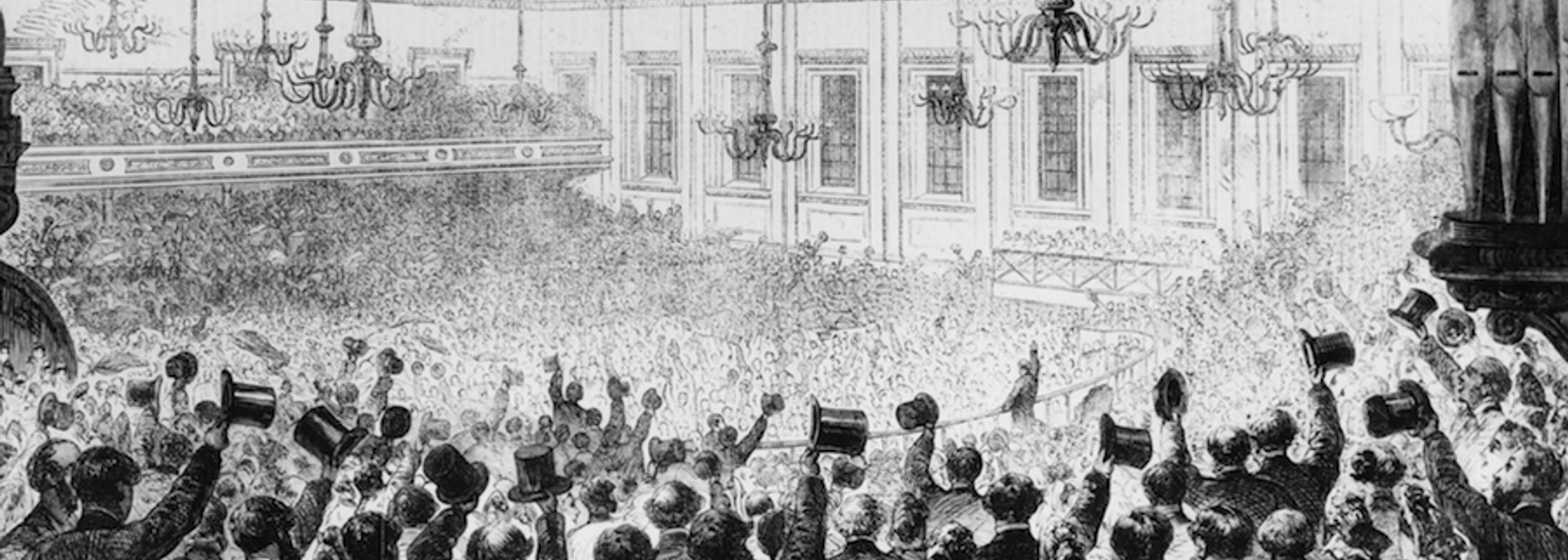The Great Indoors
Indoor arenas are a place where reputations are forged and careers kick-started. Last year, Genzebe Dibaba set pulses racing when she set three world records in a fortnight, while Renaud Lavillenie broke Sergey Bubka’s 21-year-old pole vault record. SPIKES went to find out where all this indoor madness began.
West of the City of Westminster, in central London, is The Royal Borough of Kensington and Chelsea.
In the past it was popular with aristocracy and members of high society. Even Henry VIII had a Chelsea pad. Today it is home to grand Georgian townhouses, international embassies, upmarket department stores, and one of England’s richest football clubs.
Further west there are relics of the industry and commerce that drove London during Great Britain’s industrial heyday. The Lots Road Power Station and Chelsea Wharf still stand prominent and proud on the northern bank of The Thames.
This is the unlikely birthplace of indoor athletics. In the early 1800s, this small corner of Chelsea was known as The Stadium, and formed the grounds of nearby Cremorne House.
We followed the street, but no stadium was in sight...
In the 1820s, the baron who owned Cremorne House led the “tuition and practice of skilful and manly exercises” at The Stadium; namely shooting, fencing and boxing.
Sporting activity mutated into general revelry. The Cremorne Pleasure Gardens – a landscaped park containing a circus, theatre, zoo, bowling saloon and shooting gallery – opened on the same spot in 1845. Entrance cost a shilling, and according to an 1851 edition of the Illustrated London News, it was a place where Londoners could “leave their prudery at home”.
As well as bandstands, pavilions and theatres, Cremorne Gardens contained Ashburnham Hall. It was here that the first indoor athletics meeting was held.
Modern indoor stadiums are shiny, futuristic creations; high-tech tracks and specially designed field facilities set in all-seated arenas. The inaugural event at Ashburnham Hall was a more hastily arranged affair, and not quite as twee and innocent as we might like to imagine.
Just metres from here, the first ever indoor athletics meet took place in 1863
Cremorne Gardens had held ‘tournaments’ before. Accounts suggest these were as much an exercise in organised debauchery – contemporary journalists described the ladies who featured as “no strangers to the choreographic stage” – as much as they were sporting competitions.
Happily, SPIKES can report that events on 7th November 1863 were much more the latter. The West London Rowing Club organised a night of athletics in Ashburnham Hall illuminated by gaslight. It wasn’t a huge schedule, with just four running events and a triple jump competition; nor did it become a regular meet. With the distractions of the neighbouring pleasure gardens perhaps that isn’t too much of a surprise.
Unfortunately, nothing stands of the hall today. Neither is there much of Cremorne Pleasure Gardens remaining. Yet tantalising clues to those “manly exercises” remain.
Ashburnham Road runs where Ashburnham Hall once stood. A small grass square retains the name Cremorne Gardens and contains the pleasure gardens’ original iron gates. Stadium Street has no stadium, just charming Victorian terraces, but its name serves as a reminder of the area’s less salubrious history.
These handsome iron gates are all that remain of Cremorne Gardens
Fleeting though that first meet was, a new chapter in the burgeoning era of modern athletics was born. Five years later, New York held the first American indoor meet, and it was on that side of the Atlantic that indoor competition began to prosper.
The first official national indoor championships were held in 1906 at Madison Square Gardens. The annual Millrose Games were also held there from 1914 until 2011 (they have since been moved to the Armory in Washington Heights, in northern Manhattan).
Though Europe had a lack of suitable venues, indoor competition grew in popularity in the early 20th century and there were regular meets. The first continental champs were European, and took place in Dortmund, Germany, in 1966.
The first global competition took place in Paris, France, in 1985, the brainchild of flamboyant former IAAF President Primo Nebiolo. Competitors at these inaugural championships included future world record holders, including Sergey Bubka, Marita Koch, Javier Sotomayor and Patrik Sjoberg.
21-year-old Bubka competing in the inaugural world indoor champs in 1985
Two years later, the championships were held in Indianapolis, and they have remained a biennial fixture ever since (consecutive championships in 2003 and 2004 saw the year change from odd to even).
Just like its unusual origins, indoor competition retains an idiosyncratic quality. Many athletes admit they prefer indoor conditions (not having to compete in the wind or rain is always nice); for others they are the springboard for success out in the open. Five gold medallists in the 2012 indoor champs won gold in the 2013 Moscow Championships.
The likes of Dibaba and Lavillenie, who performed so well indoors last year, will chase their first outdoor crowns in Beijing in August. But before that there are the five IAAF Indoor Permit meets, starting in Karlsruhe this weekend, before heading to Moscow, Boston, Stockholm and Birmingham. The latest edition of the European indoor champs will take place in Prague, Czech Republic, in March.
Scant trace of that first meet more than 150 years ago remains today, but its legacy very much lives on. From its modest origins, the format has evolved into the glorious, global and great indoors.





